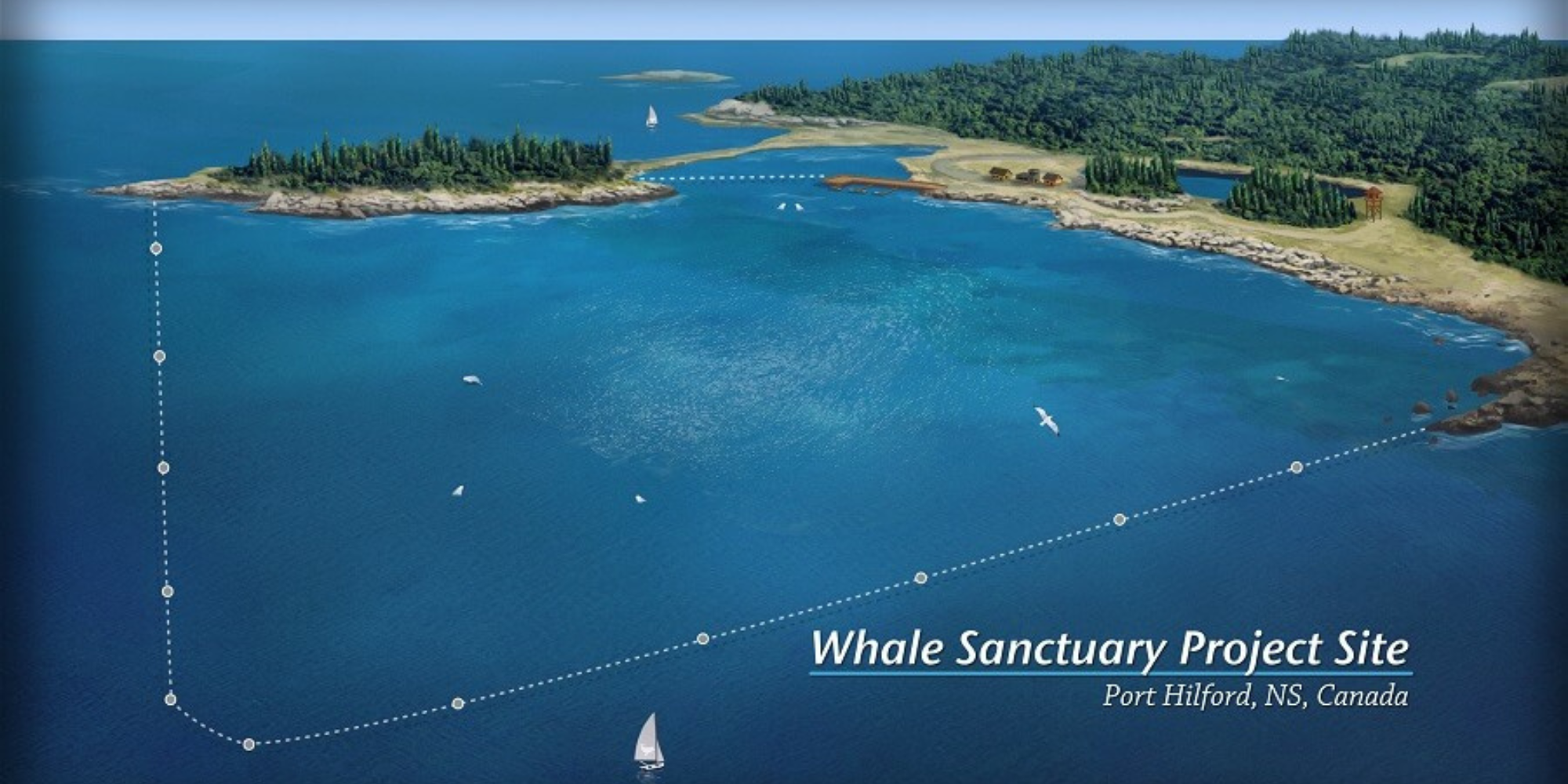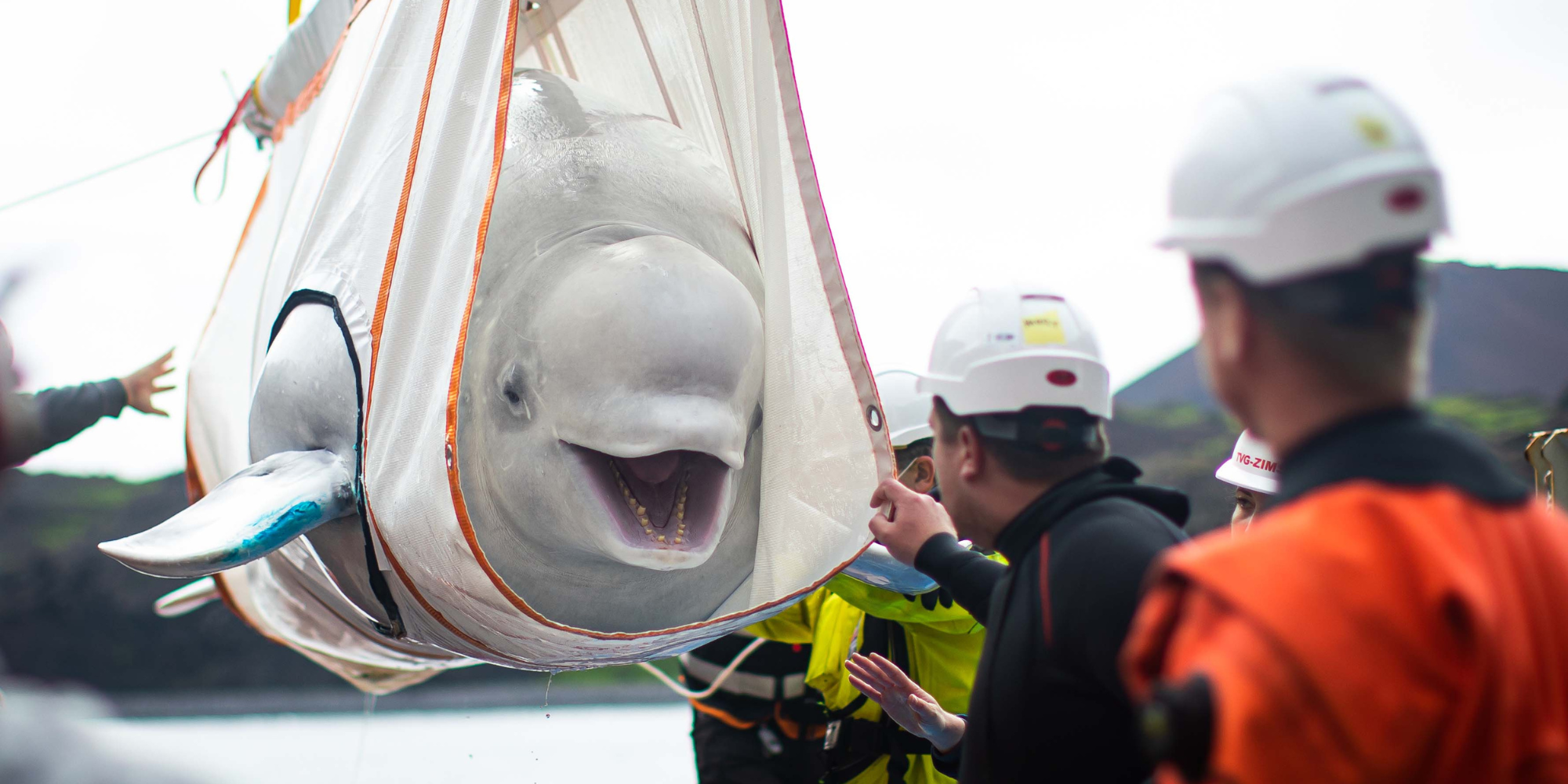Providing protection for whales and dolphins and acting as havens for formerly captive cetaceans, sanctuaries around the world play a vital role. We take a closer look at four whale and dolphin sanctuaries, some of which already exist and some which are currently in development (we’re counting the days till they become a reality!)
Umah Lumba Dolphin Rehabilitation, Release and Retirement Centre
The world’s first permanent dolphin rehabilitation, release and retirement facility for former performing dolphins, the Umah Lumba Centre is located in West Bali in Indonesia.
Umah Lumba means “dolphin house” in Balinese. The idea for the facility was initiated in 2019 by BKSDA Bali Forestry Department and the Ministry of Forestry, working with local partners Jakarta Animal Aid Network to supply human power and Dolphin Project to provide financial support and supervision.
The Centre stabilises recently confiscated dolphins from captive facilities and also aids stranded or injured dolphins. Once they are returned to good health, an assessment is made whether they’re good candidates for readaptation and release into the wild (in which case, they’re taken to Camp Lumba Lumba Readaptation and Release Centre).
If they’re not suitable candidates for release, dolphins are provided with a wonderful retirement home at the Umah Lumba Centre. They live out their lives in peace and comfort in a secure sea pen.
Two of the success stories at the Centre are Rambo and Rocky, who were amongst the group of dolphins rescued from the Melka Excelsior Hotel in Bali (where they performed for many years in small concrete pools). They regained their health and strength at Umah Lumba and re-learned how to catch live prey through live fish feedings.
In 2022, the dolphins, along with another dolphin Johnny, were given the choice of returning to the open ocean when the gates of the Centre were opened for them.
Unsurprisingly, they took the chance to swim free! The Centre continues to monitor the dolphins to check on their wellbeing.
As well as focusing on dolphin rehab and re-release, the Umah Lumba Centre provides medical aid and rehabilitation for turtles, including many endangered species.
Find out more: The Dolphin Project – Bali Sanctuary
You can also listen to The WeWhale Podcast Episode 4 with Femke den Haas, who is involved with the Umah Lumba Centre.

The Whale Sanctuary Project
This world class coastal sanctuary for whales and dolphins is being developed in Nova Scotia, Canada. Its vision is to have cetaceans living in an environment that maximises wellbeing and autonomy and is as close as possible to their natural habitat. It’s also being designed as a model for other sanctuaries to be built all over the world in years to come.
The idea for the sanctuary is very simple – there are already many sanctuaries for land animals like elephants, lions, and tigers, who are being retired from zoos and circuses. Now it’s time to provide such a sanctuary for whales and dolphins held in marine theme parks.
The Whale Sanctuary Project was incorporated in Washington DC in April 2016 as a non-profit.
After researching more than 130 locations in the U.S. and Canada, the Project selected Port Halford Bay in Nova Scotia as the best site to create a coastal sanctuary. The site is located on the ancestral lands of the Mi’kmaq people, a First Nations community, and their guidance and consultation has been a central part of the sanctuary development process.
The sanctuary will be as large as 50 football fields and 300 times larger than the biggest captive whale tanks.
Works have been ongoing over the past three years into site development, environmental studies and other types of surveys at the location, to get everything just right for the future sanctuary.
The Whale Sanctuary Project will be home to whales born into captivity who’ve never experienced life in the ocean with their family (the two species needing care are orcas and belugas). They need lifetime care so they can thrive in a natural setting as close as possible to what they’d experience in the open ocean.
If injured, stranded or recently captured whales are brought to the sanctuary, the plan is to treat and assess them, and every effort will be made to release them into the wild again. There are plans for an interpretative centre at the location and a viewing platform at the far side of the bay for people to view the whales from a respectful distance.
Find out more: The Whale Sanctuary Project

Sealife Trust Beluga Whale Sanctuary & Puffin Rescue Centre
Situated in the Vestmannaeyjar islands off the south coast of Iceland, the Sealife Trust Beluga Whale Sanctuary & Puffin Rescue Centre enjoys all the benefits of being in a relatively secluded and sheltered bay.
Its beluga whale residents are Little White and Little Grey, who travelled close to 10,000 kilometres via air, land and sea, from their previous home in a Shanghai Water Park. The belugas had originally been born in Russian waters before they were taken captive.
Klettsvik Bay, measuring up to 10 metres deep, gives significant space for the belugas to swim, dive and explore. There is room for up to 10 belugas at the sanctuary with hopes that other captive belugas will be rehabilitated there.
To keep the whales safe, the bay itself is enclosed by netting from the surface to the sea bed. There’s a special pontoon and care pool area to give access to the expert care team to look after Little Whale and Little Grey. There’s also a landside care facility at the sanctuary, and guest can visit seasonally from April to October (their visits help to fund the care for the belugas and puffins).
Find out more: Sealife Trust Beluga Sanctuary & Puffin Rescue
Aegean Marine Life Sanctuary
This sanctuary is currently in development to provide expert care and rehabilitation to sick and injured marine animals in and around the Greek Islands. It also will be home to formerly captive dolphins, who can thrive in a pristine natural environment.
The Aegean Marine Life Sanctuary (AMLS) is situated on the island of Lipsi in the Northern Dodecanese group of islands. After six years of thorough research, Vroulia Bay on the northwest of Lipsi was chosen as the preferred location.
The sanctuary bay has all of the natural conditions and stimuli essential for the physical and psychological wellbeing of bottlenose dolphins (the dolphin species most often held in captivity) along with other cetacean species.
The long fjord provides safe shelter from rough seas and the bay has ideal water conditions and sea currents to host marine animals in need of care. There’s even a shallow section that’s perfect for rehabilitation, along with deeper areas up to 40 metres in length.
A derelict building is being transformed into a redesigned rehab and research centre. A veterinary clinic, rehabilitation pools and general laboratory will all be present in the new sanctuary building.
The AMLS plans to have a viewing platform on a hill above the bay so visitors can observe the dolphins and other marine animals from a distance (preventing any possible disturbances to the species).
Find out more: Aegean Sanctuary



